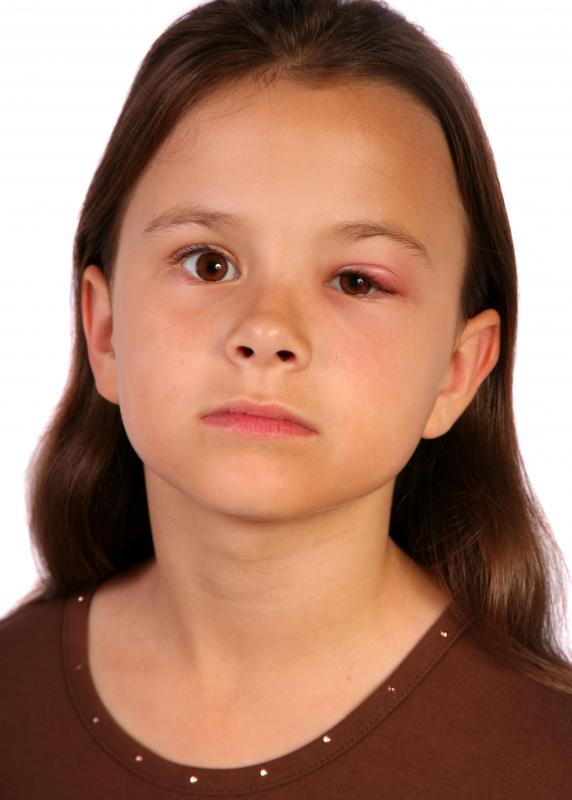At TheHealthBoard, we're committed to delivering accurate, trustworthy information. Our expert-authored content is rigorously fact-checked and sourced from credible authorities. Discover how we uphold the highest standards in providing you with reliable knowledge.
What are the Different Types of Ophthalmic Ointment?
There are several different types of ophthalmic ointment, and they can be broken into categories in different ways: sometimes people classify them based on ingredient, or strength, or overarching purpose. They can also be divided based on whether or not they’re designed for routine use, like treating dry eyes, or if they’re reserved for more intensive purposes, such as healing after laser eye surgery. Most of the time eye ointments are really similar to eye drops when it comes to their main types and basic purposes. The key difference is what they’re made of and how long they last. People usually choose ointments when they want a more intensive treatment that will last for longer. Ointments can also be harder to use than drops, though, and may carry more risks. Anyone who is unsure about the different types available or who has questions about which products are right for them should usually talk to a qualified eye specialist.
In General

Ophthalmic ointments, which are often applied to the eye in the same manner as suggested for eye drops, can include medical treatment agents such as white soft paraffin, lanolin, and liquid paraffin. The oil-based ingredients are usually designed to melt at the same temperature as eye tissue and, because of the most ointments’ relative thickness, these products will typically remain in the eye longer than a liquid version would. This characteristic makes ointment-based eye medications especially beneficial for use overnight. Lubricating ophthalmic ointments are also often applied after laser surgery or conventional eye surgery to correct cataracts.

Popular ointments include Neosporin®, a triple antibiotic compound used for infections like conjunctivitis; and Lacri-Lube®, Moisture Eyes® PM, Refresh® PM, and Tears Naturale® PM, which are all used for eye dryness and include mineral oil and white petrolatum as ingredients. Different brand names may be available in different places, and most of the time generic compounds with similar ingredients are also widely available.
Over-The-Counter Options

Some of the most popularly used ointments are readily available in the health care section of many pharmacies and chemists, typically without a prescription. These are usually most commonly used for minor eye conditions like dryness, itching, swelling, redness, soreness, allergies, or infection. Ointments intended for these conditions often contain low doses of medication along with moisturizers and sealants.
Prescription-Only Ointments

Prescription medications in the ophthalmic ointment category tend to be a lot stronger, and are often more highly specialized for certain conditions. Medicated eye ointments are also usually the preferred way of treating eye trauma. They offer protection to the eye without interfering with the healing process. In addition, their longer presence in the eye means that the medications stay on the surface for longer, and the less frequent need for their application often reduces patient discomfort.
Distinguishing Eye Drops

Ointments and more standard eye drops are usually very similar, at least when it comes to essential or “active” ingredients. There are versions meant to cure ailments such as conjunctivitis and others meant to simply help with dry or itchy eyes. Choosing one over the other is usually a matter of both convenience and comfort.
Care providers will often recommend ointments and creams to patients who prefer to apply a salve to the eye instead of a liquid. For patients, the preference is usually personal or the result of adverse reactions suffered from eye drop ingredients. Administering eye drops to children, for example, can be difficult for anyone but a medical professional. Ointments, however, can usually be readily administered to a child at home by an adult. Doctors' preferences are usually based on special medical needs of specific patients when medication must remain in the eye for relatively long periods of time.
Risks and Common Precautions
Putting anything into the eye, whether it’s medicine or not, can be risky business. Patients are usually advised to read the application instructions of any eye ointments carefully, and should ask a pharmacist or care provider if they have any questions. Paying attention to timing intervals for application is usually particularly important. In most cases it's fine to apply ointments to broken or lacerated skin, and many are designed to heal infections; just the same, care should be used on these sensitive areas and use should be discontinued at the first sign of swelling, rash, or other adverse reaction.
AS FEATURED ON:
AS FEATURED ON:















Discussion Comments
When I had an eye infection I used some Neosporin ophthalmic ointment to help clear up the infection.
I only had to use it for about 10 days. Even though the infection seemed to clear up right away, I continued to use it for the recommended time just to make sure.
It can be a little bit messy, and my eyes were always blurry for a few minutes after using. As soon as the blurriness went away, I could go about my normal activities without any problems.
After I had laser eye surgery I was given an ophthalmic eye ointment. I had to use this for at least a week after my surgery until I had my follow up visit with the doctor.
After this, I was told to keep eye drops on hand and use whenever my eyes felt dry. One side effect that many have after laser eye surgery is dry eyes, and this is very helpful for that.
I found the eye drops were more convenient to use than the ointment. Each of them had a different purpose, but I am glad I didn't have to use the ointment for longer than a week.
Post your comments